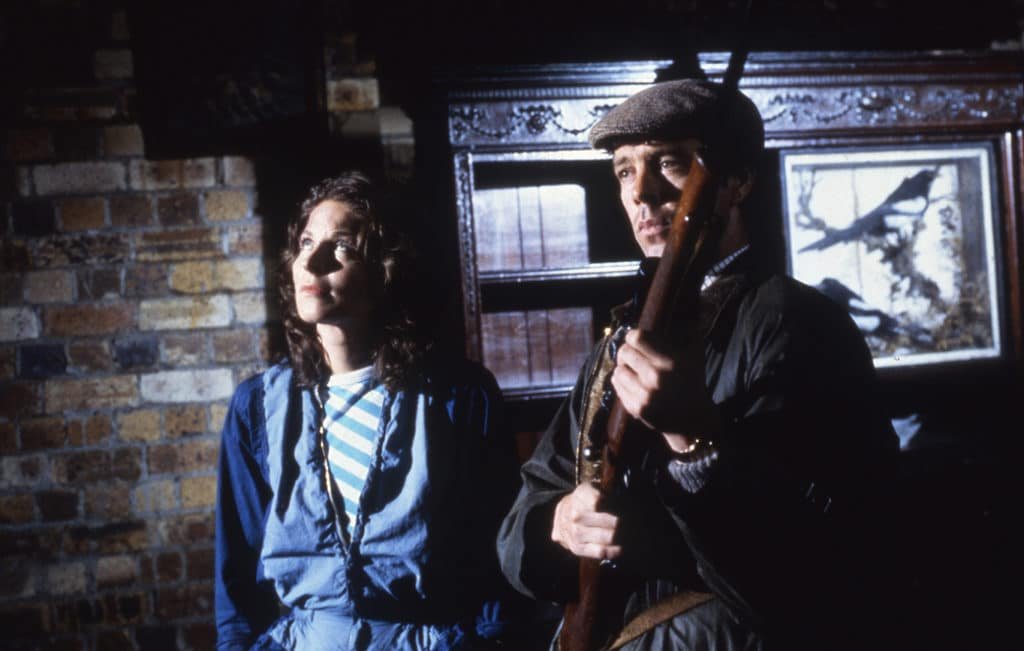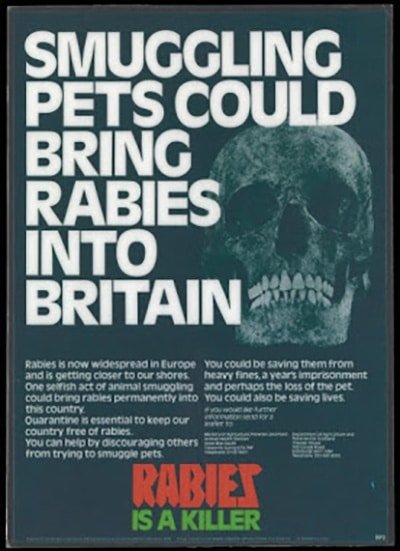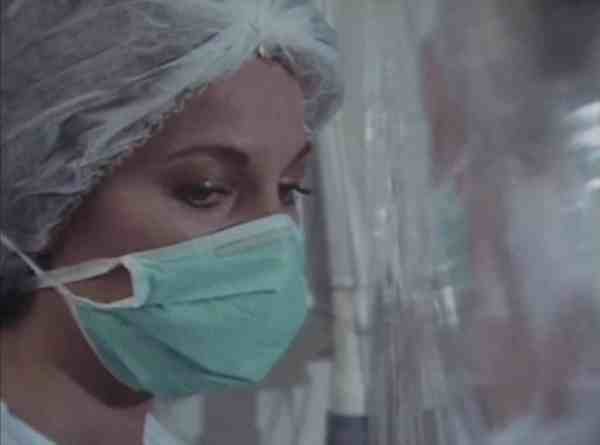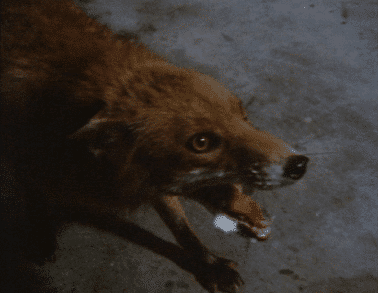
Picture the scene. A fatal disease starts to spread across Britain, forcing the government into making difficult decisions that curtail civil liberties and also into relying on a team of scientists whose data crunching and knowledge is wheeled out to placate the public. Fear starts to take hold, which transmutes into anger, which transmutes into aggression. Ordinary, law-abiding citizens are turning into desperate vigilantes, searching to restore what they feel they have lost. Then someone goes too far, committing an act that seems certain to bring spiralling rates of death and despair upon the country…
Sound familiar? I’m not writing about Britain being hip-deep in thr global pandemic of 2020-21, and people who might want to nip off for a fortnight in Spain, but rather about an excellent, and only recently resurfaced 1980s mini-series The Mad Death, that looked at what could happen if Rabies suddenly took root in Britain. Rabies has now been designated by WHO as a “neglected tropical disease”, and the only way you can catch it here is, according to Public Health England, through bat bites. But, in the 1980s, Rabies, along with the existential threat of a looming nuclear war due to the madness of Ronnie Reagan, was a very big fear. The BBC managed to terrify the public with its brilliant chilling docu-drams Threads in 1983, but in the same year, it had ramped up the tension with The Mad Death.
The Mad Death is an adaption of Nigel Slater’s novel by Sean Hignett. The series was repeated once more on BBC in 1985, then received a limited VHS release in the late 1980s, before finally surfacing on DVD in 2018. Its a piece of television that covers at least four genres – medical drama, political thriller, BBC Budget action flick, and finally, gothic horror. The key plot point is the“mad death” was the terrifying fate that awaited Rabies sufferers, tapping into a very genuine fear from the 1970s onwards that this disease could spread from its European origins into a raging pandemic across Britain.

As a child of the 1980s, I do remember seeing rather scary posters at seaside towns – “RABIES MEANS DEATH!” DON’T SMUGGLE RABIES”, often illustrated with a dog that had mad staring eyes and lots of spittle dripping from its jaws. Lovely. Just what you want to see when queuing on Walton-On-The-Naze pier for your Mr Whippy cone and turn at the slot machine. However, these were not as scary as some utterly brutal PIFs (Public Information Films) that were broadcast during the Children’s TV Hour on ITV. You would find your blissful enjoyment of Inspector Gadget and Your Mother Wouldn’t Like It suddenly destroyed by a PIF featuring a stern-faced Customs Officer, and a slightly deranged looking elderly woman in a floppy hat, who seemed to think no-one would notice her travel bag was moving of its own accord down the desk. The result? I became a little scared of dogs. However, I accept that as there is still a high number of dog owners in the British Isles, I am clearly just a wuss.
Contextually, the 1980s is a curious time for a historian to examine. It’s often falsely romanticised in popular culture as a time of bubble perms, red braces, yuppies and New Romantics, but it’s worth remembering that the early 80s were characterised by strikes, poverty, a seemingly heartless Conservative government, and an unstable international situation. And this is crucial to the Mad Death, as Rabies is seemingly inflicted on Britain by the thoughtless, stupid behaviour of the rich. And that thoughtless behaviour starts to inflict damage upon an area that is dependent upon animals for livelihoods – rural Scotland. Farmland. Hunting. Acts that are quite unthinkable to urbanites, but part of daily life if you’re a farmer or animal breeder. The divide between urban and rural has never seemed so stark.
The Mad Death starts –quite literally – when a wealthy Frenchwoman arrives in Scotland for a holiday, with her precious Siamese Cat zipped inside the lining of her fur coat. What she does not realise is that the cat got into a fight with a rabid fox in the grounds of her home, and is already succumbing to the virus. The cat goes missing, and there’s a rather gruesome shot of it being feasted on by a fox. The fox is now infected, and that is when the virus starts to sink its teeth into the human population.
The fox is found by the side of the road by a well-heeled American, Tom Siegler (Ed Bishop) – who does not realise that the animal’s seeming docility is the second stage of the disease. His ignorance and sappiness towards a wild creature proves to be his downfall. He takes it home with him, then manages to get the animal’s saliva into his system. And it is at this point, as a viewer, when a sense of dread starts to creep in. It’s the feeling that makes you shout “what are you doing, you idiot?!” at the screen. Especially when he also infects his mistress due to some particularly rough foreplay, condemning the poor woman to death. (Which almost feels like a little bit of New Right Conservatism – cheat with a married man, you will die, you harlot.) But as the fox, held in Siegler’s garage, becomes more aggressive in the morning, Siegler lets it go, letting it run into the woods to infect more animals.

No-one realises what is going on, until Siegler ends up in hospital after being involved in a car crash. At first the staff think he’s suffering from shock, or flu, until a hideous and terrifying sequence of symptoms begin – the rejection of water, foaming at the mouth, and some truly disturbing hallucination scenes. As this was filmed in the early 80s, well before CGI, it’s an incredible piece of television. No-one can pinpoint a diagnosis, until an highly intelligent nurse informs a doctor that it’s Rabies, as she witnessed similar symptoms when working in Jamaica. Then, it’s pandemonium. The government is informed, rabies vaccines are distributed, and there’s an uneasy feeling of “keep calm and carry on” merging with “oh God, what now?”
What now is the appearance of the experts – Michael Hilliard, a vet (played by Richard Heffer) and Dr Anne Maitland (Barbara Kellerman). Hilliard feels the only way to deal with this is swiftly and harshly, with animals impounded, stray animals rounded up, all pets forcibly vaccinated ,and infected animals killed. Not surprisingly, the animal-loving British public finds this hard to accept, and the extreme example of this is Miss Stonecroft (Barbara Bruce), an animal lover whose menagerie of cats and dogs at her decaying gothic house signposts her becoming the key villain by the third part.
But, here’s the thing – she isn’t really a villain, as neither is Seigler, or even the woman who smuggles in the infected cat. They are just ordinary people – selfish, self-absorbed, and unwilling to move past their own beliefs. Like everyone, frankly. The experts are frustrated by the seeming intransigence of the public – the public feel bullied and dislike being treated as children. It’s the classic case of what happens when the need to protect forces the need to make hard decisions that are difficult to take, with a good dose of poor communication added in.
What makes the public’s suspicion and mistrust easy to understand is that the experts are not saints – Hilliard incurs the wrath of the landed gentry by shooting a horse, after refusing to even quarantine it. Maitland takes the decision to vaccinate Miss Stonecroft by herself, leading to some genuinely chilling scenes which have a real touch of Hitchcock about them. There is plenty to scare in The Mad Death – from a rabid dog terrorising a shopping mall full of people, to an army sergeant being savaged as tries to take down a few dogs in the rural areas of Scotland. If there is a message to The Mad Death, its that life is so much easier and nicer if people – and that is all people – just follow a simple instruction to begin with. Doesn’t that sound familiar?
One major thing noticed about this series is how difficult it was to co-ordinate a response to a crisis in the 1980s. No mobile phones, no emails – everything is done by landline, or letter. But, I do wonder if that would make things easier – no doomscrolling, no shaming people on social media who are seen petting a dog. Yes, some of the effects do look dated, and there is no denying that this is a very “BBC represents the middle classes” production. But in showing how ill-prepared the country is, or indeed anyone is, to deal with a massive crisis until it hits them, The Mad Death has eerie resonance for today.
